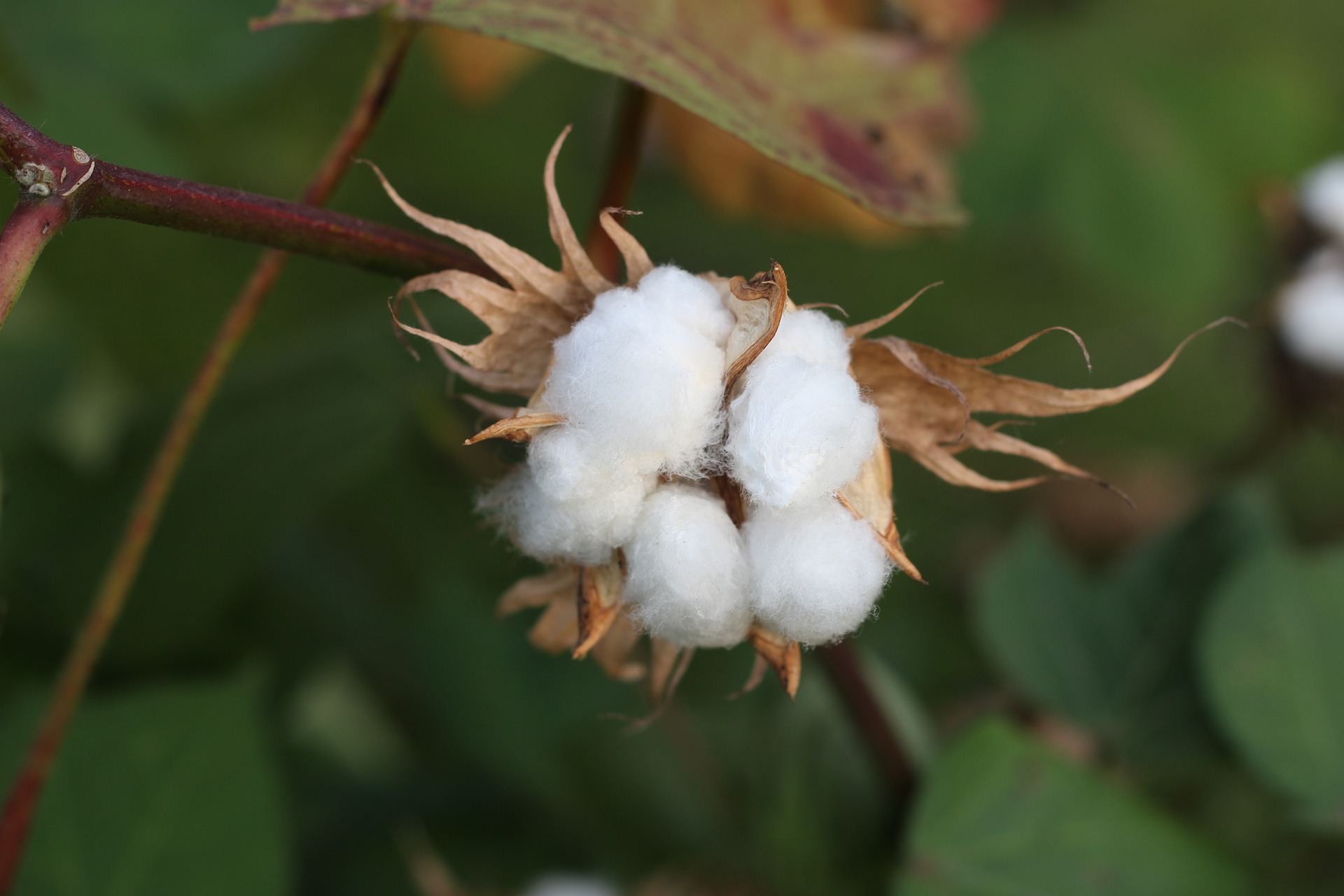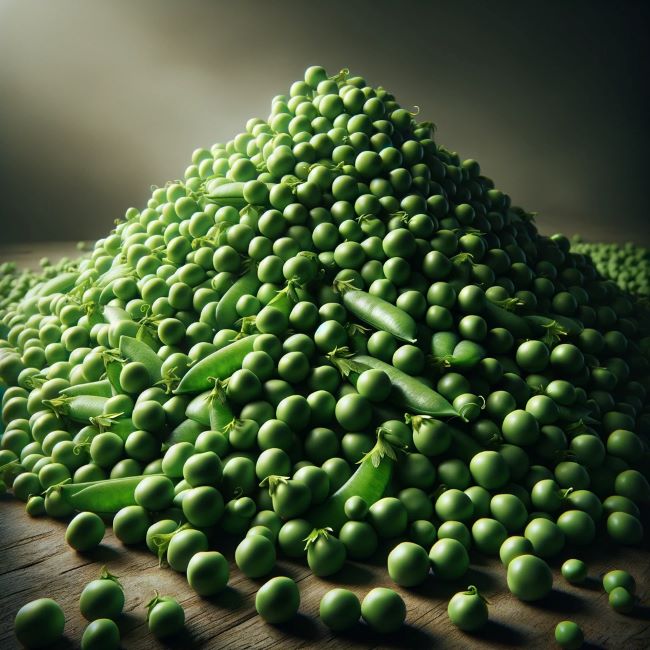Cocoa: Will the Challenges of 2023 Continue into 2024?
 Recently, WPI has received requests from a few clients to provide some analysis on the cocoa market. Clearly, there is a reason for this request as cocoa prices have been exceptionally volatile and futures more than doubled over the nine months from August 2023 through April 2024. I...
Recently, WPI has received requests from a few clients to provide some analysis on the cocoa market. Clearly, there is a reason for this request as cocoa prices have been exceptionally volatile and futures more than doubled over the nine months from August 2023 through April 2024. I...
Perceived Rice Shortage
 Rice prices have begun to normalize after spiking recently due to India fearing a shortage and imposing export restrictions. This sparked panic buying and resulted in higher prices. The price of rice early this year was around $602/MT, substantially higher than the historical average of $381/MT...
Rice prices have begun to normalize after spiking recently due to India fearing a shortage and imposing export restrictions. This sparked panic buying and resulted in higher prices. The price of rice early this year was around $602/MT, substantially higher than the historical average of $381/MT...
CFTC COT Report Analysis
The latest CFTC Commitment of Traders report highlights the ongoing bearish sentiment for oilseed and grain markets with managed money traders remaining massively short agricultural commodities. Perhaps the most notable item in this week’s report was the expansion of the record-large net...
Sugar Volatility
 It has been a volatile year for global sugar prices. They hit 27.95 cents/pound on 6 November 2023 – the highest since 1980. They fell 30 percent to 19.69 cents/pound in May and now are running around 20.26 cents/pound. It is difficult to draw a complete supply/demand imbalanc...
It has been a volatile year for global sugar prices. They hit 27.95 cents/pound on 6 November 2023 – the highest since 1980. They fell 30 percent to 19.69 cents/pound in May and now are running around 20.26 cents/pound. It is difficult to draw a complete supply/demand imbalanc...
CFTC COT Report Analysis
Funds now hold their largest short position in corn futures since at least 2015 after adding another 9,000 contracts to their holdings last week. That, and their selling of nearly 30,000 soybean contracts to bring their short in that market close to the record short were the headlines from this...
Geopolitical Trade Substitution
 Historically, Canada has been the fourth largest producer of green peas and the largest exporter of the product. Canada’s global market share for the green pea trade was 37.9 percent in 2022, while Russia supplied 13.7 percent. Meanwhile, China is both the largest producer and importer of...
Historically, Canada has been the fourth largest producer of green peas and the largest exporter of the product. Canada’s global market share for the green pea trade was 37.9 percent in 2022, while Russia supplied 13.7 percent. Meanwhile, China is both the largest producer and importer of...
CFTC COT Report Analysis
The weekly CFTC report was in-line with expectations as it showed funds remaining dedicated net sellers across oilseed complex. The only exception was the buying in soyoil, where funds took back nearly half their short position in that contract amid the fears about the Indonesia-China trade war...
Misalignment of Land and Labor
 U.S. fruit and vegetable growers made their annual trek to Capitol Hill but instead of their usual gift of a full box of fresh produce for the Members of Congress, they only filled it a quarter full. Their message: fresh fruit production has fallen by 10 percent and fresh vegetable output has g...
U.S. fruit and vegetable growers made their annual trek to Capitol Hill but instead of their usual gift of a full box of fresh produce for the Members of Congress, they only filled it a quarter full. Their message: fresh fruit production has fallen by 10 percent and fresh vegetable output has g...
CFTC COT Report Analysis
As expected, funds were proven to be staunch net sellers last week, according to Friday’s CFTC report data. Funds were the most aggressive in corn where they sold nearly 90,000 contracts and obtained their largest short position since April and the largest early-June short since 2020. Fun...
No Mimosas
 Brazil produces more than a third of the world’s oranges and controls 70 percent of global exports. This drought, plus disease and other issues has caused production to fall by nearly a quarter. As a result, prices have spiked. It may not be a proxy for soybeans and corn since oranges are...
Brazil produces more than a third of the world’s oranges and controls 70 percent of global exports. This drought, plus disease and other issues has caused production to fall by nearly a quarter. As a result, prices have spiked. It may not be a proxy for soybeans and corn since oranges are...
CFTC COT Report Analysis
The attached PDF offers graphical depiction and seasonal analysis of managed money and commercial traders' net position in key agricultural commodity markets. The data is, of course, taken from the CFTC's weekly Commitment of Traders report, using the futures only data. WPI recently completed a...
Where are the Veggies?
 As noted yesterday, USDA estimates that the food category incurring the most inflation this year in the U.S. will be fresh vegetables. Part of the problem is the disconnect between encouraging consumption of this food group, and domestic production. About 40 percent of fresh vegetables are impo...
As noted yesterday, USDA estimates that the food category incurring the most inflation this year in the U.S. will be fresh vegetables. Part of the problem is the disconnect between encouraging consumption of this food group, and domestic production. About 40 percent of fresh vegetables are impo...
CFTC COT Report Analysis
The big surprise in this week’s CFTC report was the expansion of funds’ short position in corn by over 54,000 contracts. Funds had been aggressively exiting these shorts but apparently decided the threats to the U.S. planting effort and Brazil’s safrinha crop were insufficient...
CFTC COT Report Analysis
The attached PDF offers graphical depiction and seasonal analysis of managed money and commercial traders' net position in key agricultural commodity markets. The data is, of course, taken from the CFTC's weekly Commitment of Traders report, using the futures only data. WPI recently completed a...
Milking Future Demand
U.S. and Mexican dairy industry representatives met and renewed their commitment to “collaborate and advocate for mutually beneficial dairy policies. This was a policy initiative begun back in 2016. At first glance, the effort seems surprising given that Mexico exports more than three tim...
CFTC COT Report Analysis
The surprise in this week’s CFTC report is that – through Tuesday’s data reporting deadline - funds were more aggressive covering grain/oilseed shorts than expected. The headline number is that funds bought back over 111,000 contracts and are now only short about 30,000 contra...
Meeting with the Cotton Hopeful
 Although many small developing countries produce cotton, about five countries produce most of the fiber. China and India alone account for nearly half the global output of cotton. Four small African countries (Benin, Burkina Faso, Chad, and Mali) formed the Cotton-4 or C-4 consortium many years...
Although many small developing countries produce cotton, about five countries produce most of the fiber. China and India alone account for nearly half the global output of cotton. Four small African countries (Benin, Burkina Faso, Chad, and Mali) formed the Cotton-4 or C-4 consortium many years...
CFTC COT Report Analysis
The attached PDF offers graphical depiction and seasonal analysis of managed money and commercial traders' net position in key agricultural commodity markets. The data is, of course, taken from the CFTC's weekly Commitment of Traders report, using the futures only data. WPI recently completed a...
Eat less, Toot Less
 Plants such as beans, lentils and chickpeas are the nutritional rage. They are plant derived foods with higher protein content and thus their production and consumption should be on the rise. But alas, the USDA data is not comporting with that nutritional advice. Over the past four years,...
Plants such as beans, lentils and chickpeas are the nutritional rage. They are plant derived foods with higher protein content and thus their production and consumption should be on the rise. But alas, the USDA data is not comporting with that nutritional advice. Over the past four years,...
CFTC COT Report Analysis
Based on futures’ price action late last week and early this week, one would be expecting funds to have been net sellers in the major ag commodities, and that’s exactly what happened. Funds expanded their short soybean position by some 30,000 contracts, making it a new five-year low...
An Era up in Smoke
 British Prime Minister Rishi Sunak has proposed that anyone turning 15 years of age or younger in 2024 will be banned forever from purchasing cigarettes. Eash year, the age restriction will be raised by one year. The bill also makes vapes less appealing. The goal is to start the first generatio...
British Prime Minister Rishi Sunak has proposed that anyone turning 15 years of age or younger in 2024 will be banned forever from purchasing cigarettes. Eash year, the age restriction will be raised by one year. The bill also makes vapes less appealing. The goal is to start the first generatio...
CFTC COT Report Analysis
The attached PDF offers graphical depiction and seasonal analysis of managed money and commercial traders' net position in key agricultural commodity markets. The data is, of course, taken from the CFTC's weekly Commitment of Traders report, using the futures only data. WPI recently completed a...
CFTC COT Report Analysis
The attached PDF offers graphical depiction and seasonal analysis of managed money and commercial traders' net position in key agricultural commodity markets. The data is, of course, taken from the CFTC's weekly Commitment of Traders report, using the futures only data. WPI recently completed a...
Cocoa Puffs
 The global cocoa price hit $10,120/MT yesterday, triple its price last fall, and it is still unlikely to be at its apex. The cause is a sharp drop-off in production in Ghana and Côte d’Ivoire, the two countries that produce nearly 65 percent of the world’s cocoa beans. Some ha...
The global cocoa price hit $10,120/MT yesterday, triple its price last fall, and it is still unlikely to be at its apex. The cause is a sharp drop-off in production in Ghana and Côte d’Ivoire, the two countries that produce nearly 65 percent of the world’s cocoa beans. Some ha...
Cocoa: Will the Challenges of 2023 Continue into 2024?
 Recently, WPI has received requests from a few clients to provide some analysis on the cocoa market. Clearly, there is a reason for this request as cocoa prices have been exceptionally volatile and futures more than doubled over the nine months from August 2023 through April 2024. I...
Recently, WPI has received requests from a few clients to provide some analysis on the cocoa market. Clearly, there is a reason for this request as cocoa prices have been exceptionally volatile and futures more than doubled over the nine months from August 2023 through April 2024. I...
Perceived Rice Shortage
 Rice prices have begun to normalize after spiking recently due to India fearing a shortage and imposing export restrictions. This sparked panic buying and resulted in higher prices. The price of rice early this year was around $602/MT, substantially higher than the historical average of $381/MT...
Rice prices have begun to normalize after spiking recently due to India fearing a shortage and imposing export restrictions. This sparked panic buying and resulted in higher prices. The price of rice early this year was around $602/MT, substantially higher than the historical average of $381/MT...
CFTC COT Report Analysis
The latest CFTC Commitment of Traders report highlights the ongoing bearish sentiment for oilseed and grain markets with managed money traders remaining massively short agricultural commodities. Perhaps the most notable item in this week’s report was the expansion of the record-large net...
Sugar Volatility
 It has been a volatile year for global sugar prices. They hit 27.95 cents/pound on 6 November 2023 – the highest since 1980. They fell 30 percent to 19.69 cents/pound in May and now are running around 20.26 cents/pound. It is difficult to draw a complete supply/demand imbalanc...
It has been a volatile year for global sugar prices. They hit 27.95 cents/pound on 6 November 2023 – the highest since 1980. They fell 30 percent to 19.69 cents/pound in May and now are running around 20.26 cents/pound. It is difficult to draw a complete supply/demand imbalanc...
CFTC COT Report Analysis
Funds now hold their largest short position in corn futures since at least 2015 after adding another 9,000 contracts to their holdings last week. That, and their selling of nearly 30,000 soybean contracts to bring their short in that market close to the record short were the headlines from this...
Geopolitical Trade Substitution
 Historically, Canada has been the fourth largest producer of green peas and the largest exporter of the product. Canada’s global market share for the green pea trade was 37.9 percent in 2022, while Russia supplied 13.7 percent. Meanwhile, China is both the largest producer and importer of...
Historically, Canada has been the fourth largest producer of green peas and the largest exporter of the product. Canada’s global market share for the green pea trade was 37.9 percent in 2022, while Russia supplied 13.7 percent. Meanwhile, China is both the largest producer and importer of...
CFTC COT Report Analysis
The weekly CFTC report was in-line with expectations as it showed funds remaining dedicated net sellers across oilseed complex. The only exception was the buying in soyoil, where funds took back nearly half their short position in that contract amid the fears about the Indonesia-China trade war...
Misalignment of Land and Labor
 U.S. fruit and vegetable growers made their annual trek to Capitol Hill but instead of their usual gift of a full box of fresh produce for the Members of Congress, they only filled it a quarter full. Their message: fresh fruit production has fallen by 10 percent and fresh vegetable output has g...
U.S. fruit and vegetable growers made their annual trek to Capitol Hill but instead of their usual gift of a full box of fresh produce for the Members of Congress, they only filled it a quarter full. Their message: fresh fruit production has fallen by 10 percent and fresh vegetable output has g...
CFTC COT Report Analysis
As expected, funds were proven to be staunch net sellers last week, according to Friday’s CFTC report data. Funds were the most aggressive in corn where they sold nearly 90,000 contracts and obtained their largest short position since April and the largest early-June short since 2020. Fun...
No Mimosas
 Brazil produces more than a third of the world’s oranges and controls 70 percent of global exports. This drought, plus disease and other issues has caused production to fall by nearly a quarter. As a result, prices have spiked. It may not be a proxy for soybeans and corn since oranges are...
Brazil produces more than a third of the world’s oranges and controls 70 percent of global exports. This drought, plus disease and other issues has caused production to fall by nearly a quarter. As a result, prices have spiked. It may not be a proxy for soybeans and corn since oranges are...
CFTC COT Report Analysis
The attached PDF offers graphical depiction and seasonal analysis of managed money and commercial traders' net position in key agricultural commodity markets. The data is, of course, taken from the CFTC's weekly Commitment of Traders report, using the futures only data. WPI recently completed a...
Where are the Veggies?
 As noted yesterday, USDA estimates that the food category incurring the most inflation this year in the U.S. will be fresh vegetables. Part of the problem is the disconnect between encouraging consumption of this food group, and domestic production. About 40 percent of fresh vegetables are impo...
As noted yesterday, USDA estimates that the food category incurring the most inflation this year in the U.S. will be fresh vegetables. Part of the problem is the disconnect between encouraging consumption of this food group, and domestic production. About 40 percent of fresh vegetables are impo...
CFTC COT Report Analysis
The big surprise in this week’s CFTC report was the expansion of funds’ short position in corn by over 54,000 contracts. Funds had been aggressively exiting these shorts but apparently decided the threats to the U.S. planting effort and Brazil’s safrinha crop were insufficient...
CFTC COT Report Analysis
The attached PDF offers graphical depiction and seasonal analysis of managed money and commercial traders' net position in key agricultural commodity markets. The data is, of course, taken from the CFTC's weekly Commitment of Traders report, using the futures only data. WPI recently completed a...
Milking Future Demand
U.S. and Mexican dairy industry representatives met and renewed their commitment to “collaborate and advocate for mutually beneficial dairy policies. This was a policy initiative begun back in 2016. At first glance, the effort seems surprising given that Mexico exports more than three tim...
CFTC COT Report Analysis
The surprise in this week’s CFTC report is that – through Tuesday’s data reporting deadline - funds were more aggressive covering grain/oilseed shorts than expected. The headline number is that funds bought back over 111,000 contracts and are now only short about 30,000 contra...
Meeting with the Cotton Hopeful
 Although many small developing countries produce cotton, about five countries produce most of the fiber. China and India alone account for nearly half the global output of cotton. Four small African countries (Benin, Burkina Faso, Chad, and Mali) formed the Cotton-4 or C-4 consortium many years...
Although many small developing countries produce cotton, about five countries produce most of the fiber. China and India alone account for nearly half the global output of cotton. Four small African countries (Benin, Burkina Faso, Chad, and Mali) formed the Cotton-4 or C-4 consortium many years...
CFTC COT Report Analysis
The attached PDF offers graphical depiction and seasonal analysis of managed money and commercial traders' net position in key agricultural commodity markets. The data is, of course, taken from the CFTC's weekly Commitment of Traders report, using the futures only data. WPI recently completed a...
Eat less, Toot Less
 Plants such as beans, lentils and chickpeas are the nutritional rage. They are plant derived foods with higher protein content and thus their production and consumption should be on the rise. But alas, the USDA data is not comporting with that nutritional advice. Over the past four years,...
Plants such as beans, lentils and chickpeas are the nutritional rage. They are plant derived foods with higher protein content and thus their production and consumption should be on the rise. But alas, the USDA data is not comporting with that nutritional advice. Over the past four years,...
CFTC COT Report Analysis
Based on futures’ price action late last week and early this week, one would be expecting funds to have been net sellers in the major ag commodities, and that’s exactly what happened. Funds expanded their short soybean position by some 30,000 contracts, making it a new five-year low...
An Era up in Smoke
 British Prime Minister Rishi Sunak has proposed that anyone turning 15 years of age or younger in 2024 will be banned forever from purchasing cigarettes. Eash year, the age restriction will be raised by one year. The bill also makes vapes less appealing. The goal is to start the first generatio...
British Prime Minister Rishi Sunak has proposed that anyone turning 15 years of age or younger in 2024 will be banned forever from purchasing cigarettes. Eash year, the age restriction will be raised by one year. The bill also makes vapes less appealing. The goal is to start the first generatio...
CFTC COT Report Analysis
The attached PDF offers graphical depiction and seasonal analysis of managed money and commercial traders' net position in key agricultural commodity markets. The data is, of course, taken from the CFTC's weekly Commitment of Traders report, using the futures only data. WPI recently completed a...
CFTC COT Report Analysis
The attached PDF offers graphical depiction and seasonal analysis of managed money and commercial traders' net position in key agricultural commodity markets. The data is, of course, taken from the CFTC's weekly Commitment of Traders report, using the futures only data. WPI recently completed a...
Cocoa Puffs
 The global cocoa price hit $10,120/MT yesterday, triple its price last fall, and it is still unlikely to be at its apex. The cause is a sharp drop-off in production in Ghana and Côte d’Ivoire, the two countries that produce nearly 65 percent of the world’s cocoa beans. Some ha...
The global cocoa price hit $10,120/MT yesterday, triple its price last fall, and it is still unlikely to be at its apex. The cause is a sharp drop-off in production in Ghana and Côte d’Ivoire, the two countries that produce nearly 65 percent of the world’s cocoa beans. Some ha...